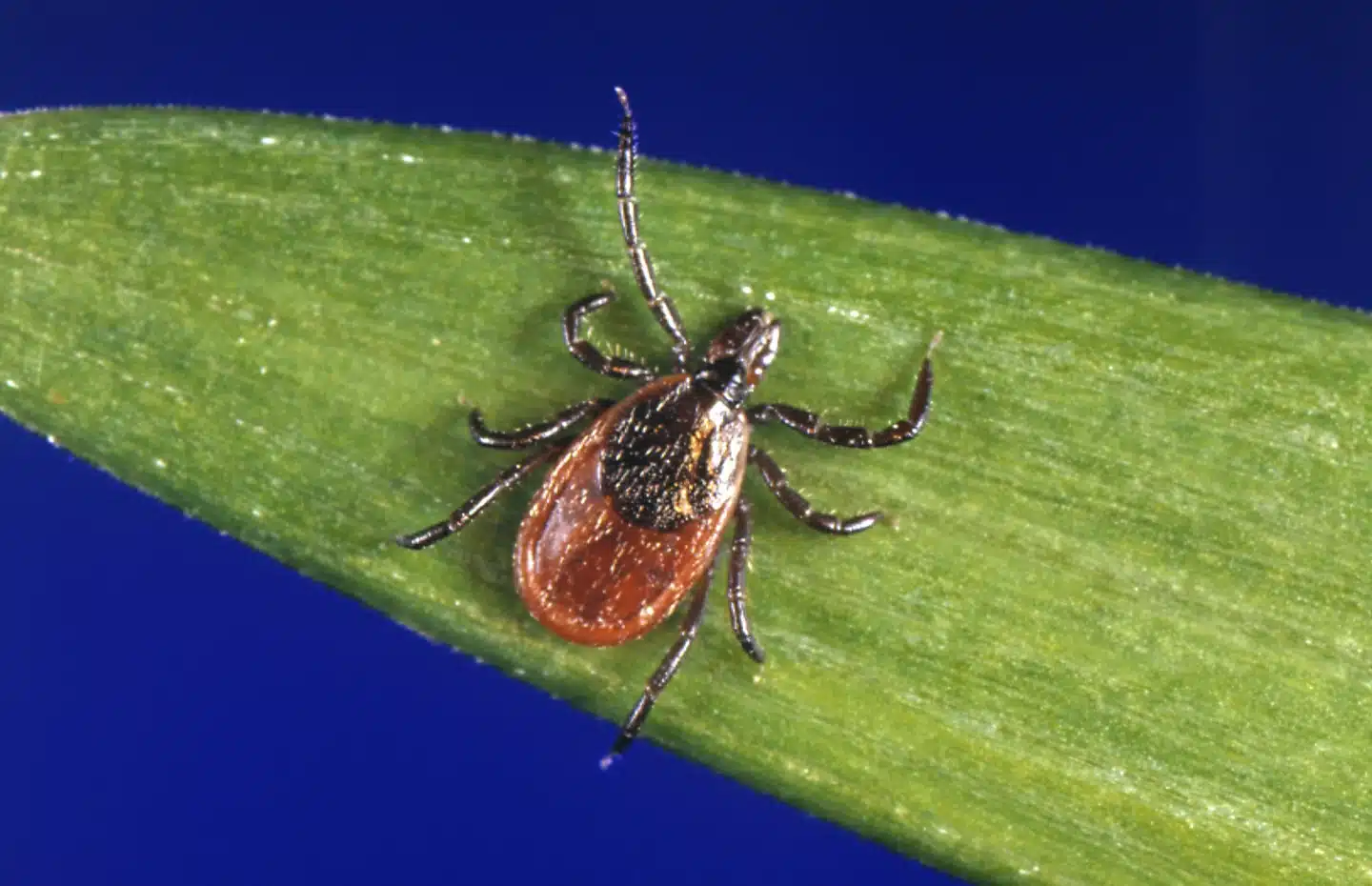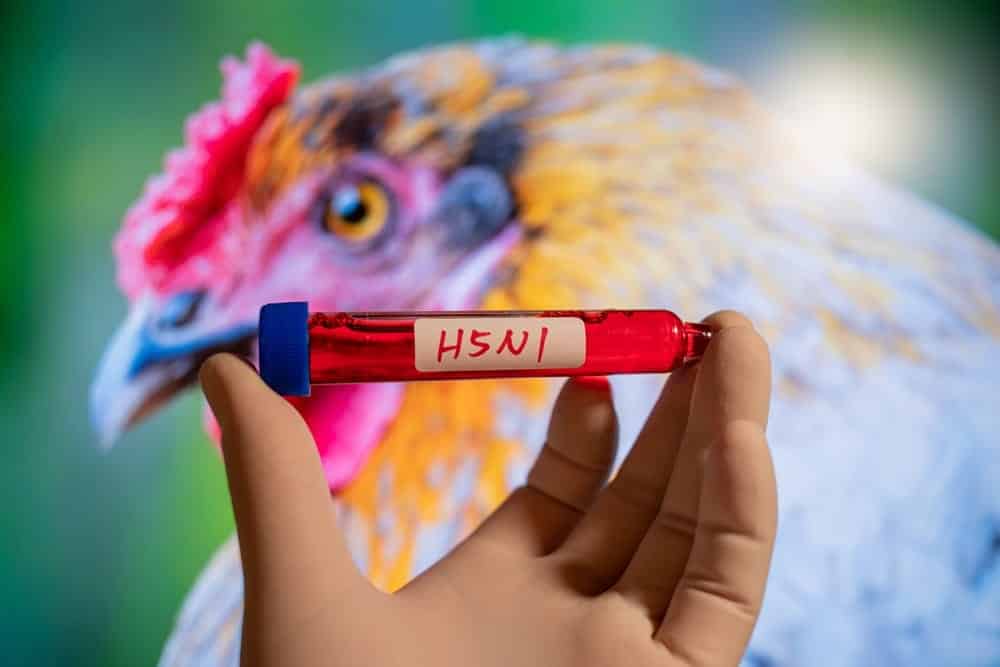Health
Feel Good Foods Recalls Gluten-Free Bagels Over Gluten

The United States Food and Drug Administration has issued an active recall for gluten-free bagels sold nationwide. The recalled gluten-free stuffed tiny bagels were offered in frozen sections of supermarkets across the country.
Feel Good Foods recalls two gluten-free frozen bagel products: Plain and Everything flavored Cream Cheese Stuffed Mini Bagels. The printed UPC numbers for these products are 89903900283 and 89903900286, respectively.
The recalled bagels have “best by” dates ranging from 5/29/24 to 9/17/25; therefore, check your freezer as soon as possible for these affected items. This recall does not affect any other Feel Good Foods products. After receiving one consumer report of an “adverse reaction to gluten” after eating the stuffed tiny bagels, the business announced the recall.
If you have one of the recalled goods and are allergic or sensitive to gluten, diet, or wheat, dispose of it immediately or return it to the place of purchase for a refund.
People who are allergic or intolerant to wheat or gluten may experience a severe allergic reaction after eating one of these possibly contaminated breakfast foods, including anaphylaxis.2 An allergic response can be fatal, and symptoms include hives, nausea or vomiting, abdominal pain, diarrhea, and, in severe cases, throat tightness and difficulty breathing.
If you have an adverse response after consuming an impacted product of gluten-free bagels, Google Gluten Free Bagel Near Me or call 911 immediately.
For additional information on this recall, please contact Feel Good Foods’ Customer Care Center at [email protected] or call 1-800-638-8949 between 9 a.m. and 5 p.m. EST daily.
EatingWell only uses high-quality sources, including peer-reviewed studies, to back up the data in our articles. Read our editorial process to see how we fact-check and ensure our material is accurate, dependable, and trustworthy.
Gluten-Free Bagels and Managing Gluten Allergy
Gluten-free diets have become more than just a health trend. For many, they are a necessity due to gluten allergies or celiac disease. If you’re new to the gluten-free lifestyle or looking to understand how to effectively manage a gluten allergy, you’ve come to the right place. Let’s dive into what gluten-free food entails and how it can lead to a healthier, happier lifestyle.
What Exactly is Gluten?
Gluten is a protein in wheat, barley, rye, and triticale. It acts as a glue that helps foods maintain their shape. Sounds harmless, right? However, for those with gluten allergies or celiac disease, gluten can trigger serious health issues.
Identifying Gluten-Free Foods
Transitioning to a gluten-free diet? Begin with naturally gluten-free foods:
- Fruits and Vegetables: Packed with nutrients and naturally free from gluten.
- Whole Grains: Choose quinoa, rice, or buckwheat. To avoid cross-contamination, check that they are labeled as gluten-free.
- Proteins: Beef, chicken, fish, and legumes are great for protein intake and are naturally gluten-free.
- Dairy Products: Most are gluten-free, but always check the labels for additives that might contain gluten.
Gluten-Free Grains – A Closer Look
Not all grains are off-limits. Many grains are naturally gluten-free and offer a variety of health benefits. Here are some you might include in your diet:
- Quinoa and Amaranth: High in protein and fiber, perfect for salads or as a side dish.
- Millet and Sorghum: Excellent for making gluten-free bread or cereal.
- Teff: Ideal for baking, packed with calcium, iron, and protein.
Cooking and Baking Without Gluten
Are you wondering how to cook or bake without gluten? It’s simpler than you think. Start by substituting gluten-containing flour with rice, coconut, or almond flour. These alternatives avoid gluten and add a unique flavor and texture to your dishes.
Shopping Tips for Gluten-Free Diets
Navigating the grocery store on a gluten-free diet can be a challenge. Here’s how to make it easier:
- Read Labels Carefully: Look for the gluten-free certification on the packaging.
- Beware of Cross-Contamination: Products like oats often share facilities with gluten-containing grains and may be unsafe.
- Explore Gluten-Free Sections: Most stores now have dedicated sections with gluten-free products.
Conclusion
Adopting a gluten-free lifestyle can seem daunting, but it’s manageable with the right knowledge and tools. By understanding which foods to embrace and which to avoid, you can ensure a nutritious diet that caters to your health needs. Remember, going gluten-free doesn’t mean compromising on taste or variety in your diet!
Keywords: homemade gluten-free bagels, gluten-free sourdough bagels, recipe for gluten-free bagels, vegan gluten-free bagels
Health
Tick Season Has Arrived. Protect Yourself With These Tips

FORT COLLINS, CO – Tick season has begun across the United States, and experts warn that bloodsuckers may be as prevalent as ever.
According to some analysts, another warm winter and other favorable variables will most certainly result in the 2024 tick population being equal to or higher than the previous year.
“It’s very bad and has only been getting worse,” said the Centers for Disease Control and Prevention Susanna Visser.
Rising ticks are spreading into new locations, bringing unique diseases. Exotic southern species, such as the Gulf Coast and lone star ticks, are being found in New York and other northern states, for example.
However, the tick that experts warn about the most is the common black-legged tick, which lives primarily in forests and transmits Lyme disease. Infection rates peak in May, with US health officials estimating that roughly half a million Lyme infections occur yearly.
Here is a peek at what to expect this year and how to protect yourself.
AP – VOR News Image
TICK FACTS.
Ticks are little, eight-legged, bloodsucking parasites (arachnids, not insects) that prey on animals and occasionally humans. Some ticks carry illness-causing bacteria, which they spread when they bite.
There is no widely recognized estimate of the number of ticks that exist each year, but scientists agree that ticks are becoming an increasingly widespread health threat in significant parts of the United States.
Blacklegged ticks, commonly known as deer ticks because they feed on deer, are some of the most common in the eastern portion of the United States. They were abundant centuries ago, then declined when woods were cut down, and deer were hunted before rebounding alongside deer in wooded suburbs. Ticks have expanded from New England and the Midwest to the South and Great Plains.
Tick populations fluctuate throughout the year for various reasons. They prefer warm, humid weather and can be seen after a mild winter. The number of deer and mice available to feed is also important.
“This is an epidemic in slow motion,” stated Rebecca Eisen, a CDC research scientist and tick expert.
AP – VOR News Image
2024 TICK SEASON FORECAST
Weather can influence the severity of a tick season.
Very cold, dry winters can reduce tick numbers, but recent winters have been mild, which some ascribe to climate change.
Scott Williams, a tick researcher at the Connecticut Agricultural Experiment Station, stated, “Winters are no longer limiting the tick population.”
Ticks can endure high temperatures but tend to hibernate during a dry summer. That happened in Maine from 2020 to 2022, according to Chuck Lubelczyk, a vector ecologist at the MaineHealth Institute for Research.
However, last year was exceptionally wet, and tick activity increased in Maine, the state with the highest prevalence of Lyme disease in the nation. The weather service predicts increased temperatures and precipitation, so “on paper, at least, it could be a very good year for the ticks,” Lubelczyk added.
Because of the warm winter in Wisconsin, adult ticks remained active longer than usual. The tick nymphs are emerging, and a wet spring is paving the way for a large population, according to Xia Lee, an entomologist with the Wisconsin Department of Health Services.
The same holds for New York.
“It will be as bad as last year, if not worse,” said Saravanan Thangamani, a tick and tickborne illness researcher at SUNY Upstate Medical University in Syracuse.
What is Lyme Disease?
Not all ticks contain disease-causing germs; researchers anticipate that 20% to 30% of black-legged tick nymphs emerging in the Northeast and Midwest during spring and summer will carry the Lyme disease bacteria
Lyme disease symptoms often appear three to thirty days following a bite, including fever, headache, lethargy, and a bull’s-eye-like rash. If you are bitten and develop symptoms, visit a doctor to be treated with antibiotics.
AP – VOR News Image
HOW TO KEEP TICKS AWAY FROM YOU
According to experts, the best course of action is to prevent getting bitten by a tick in the first place.
When you go outside, take note of woody regions and where grassy lands begin to blend into wooded ones. Ticks typically perch on ankle-level plants with extended upper legs, waiting to latch on to an unwary dog or human.
Try to walk in the middle of the walkway, wear light-colored, permethrin-treated clothing, and apply EPA-registered insect repellents.
How to Check for Ticks
When you get inside, check for ticks. They can be found anywhere on the human body, but the most common locations are around the waist, below the knees, between the fingers and toes, underarms, around the belly button, and the neck or hairline
They are more difficult to see while young, so inspect them closely and promptly remove them with tweezers.
The CDC does not advocate submitting individual ticks to testing services for analysis since a person may receive more than one tick bite, and the results of the tested tick may not provide enough information.
SOURCE – (AP)
Business
Bike Shops Boomed Early In The Pandemic. It’s Been A Bumpy Ride For Most Ever Since

For the nation’s bicycle stores, the last several years have certainly felt like the business version of the Tour de France, with innumerable twists and turns testing their stamina.
Early in the pandemic, a surge in interest in cycling drove sales up 64% to $5.4 billion in 2020, according to Circana, the retail tracking firm. It wasn’t uncommon for some stores to sell 100 or more bikes in a few days.
The boom did not last. Due to pandemic-related supply chain challenges, the retailers sold out of bikes and struggled to replenish. Inventory has caught up, but fewer people require new bicycles. Bicycle manufacturers have started lowering prices to clear off excess inventory. It all adds up to a challenging climate for retailers, with a few bright areas such as dirt and e-bikes.
“The industry had a hard time keeping up with demand for a couple of years, but then demand slowed as the lockdowns ended, and a lot of inventory started showing up,” said Stephen Frothingham, editor-in-chief of Bicycle Retailer & Industry News. “So now for the last, a year and a half, the industry has struggled with having too much inventory, at the supplier level, at the factory level, at the distributor level, at the retail level.”
Circana reports that bike sales will reach $4.1 billion in 2023, up 23% from 2019 but down 24% from 2020. The recovery from the epidemic has been uneven, with large businesses such as REI and Scheels recovering faster than independent bike shops, according to Matt Tucker, director of client development for Circana’s sports equipment business.

Pixa Bay – VOR News Image
Bike Shops Boomed Early In The Pandemic. It’s Been A Bumpy Ride For Most Ever Since
John McDonell, owner of Market Street Cycles on San Francisco’s famed Market Street, says the pandemic’s shift to hybrid labor has been especially difficult for business. During the summer, 3,000 bikes would pass by his shop each day. With fewer individuals commuting to work, that number has dropped to less than 1,000.
According to Pacer.ai, which tracks people’s activities based on smartphone usage, San Francisco falls behind all other major cities regarding workers returning to work, with office visits down 49% from April 2019.
“Our downtown is still a wasteland,” McDonell explained.
Independent bike stores now compete not only with national chains but also with bike manufacturers such as Specialized and Trek. These companies have been buying bike shops and selling their bikes directly to customers, thus eliminating the middleman. According to Frothingham, there are now over 1,000 bike shops in the country that are either owned by Trek or Specialized.
“They’ve got the money to absorb the fact that bike stores, you know, are not a super profitable thing, and in the process, they’ve also been able to cut us out of it,” McDonell stated.
McDonell has been obliged to use a skeleton team of himself and another employee, down from five earlier. His desire to sell his shop to a younger bike enthusiast when he retires is diminishing. He might close his store when his lease expires in a few years.

Pixa Bay – VOR News Image
Bike Shops Boomed Early In The Pandemic. It’s Been A Bumpy Ride For Most Ever Since
“Now I am just trying to land it with both engines on fire and trying not to lose money on my way out,” he stated
Douglas Emerson’s bike business, University Bicycles, in Boulder, Colorado, is doing better, thanks to its placement in one of the country’s most popular biking destinations. He’s owned the shop for 39 years and employs 30 people.
University Bicycles, like other bike retailers, experienced a surge in bike sales due to the pandemic. Emerson recalls selling 107 bicycles in 48 hours. However, immediately following the boom, sales fell considerably due to a lack of inventory, and rentals declined because no one was traveling.
“It became a struggle right after the boom,” Emerson explained. “Since then, manufacturers have overproduced.” In addition, they have significantly reduced prices, which benefits consumers. However, tiny retailers generally cannot take advantage of those discounts.”
Emerson claims the shop hit a “saturation point” when everyone who wanted a bike purchased one. He now sells these consumer items such as jackets, helmets, and locks. His store has returned to its 2019 sales figures.
University Bicycles has also benefited from some of the changes in purchasing trends. The continued strong demand for e-bikes and the increased need for children’s bikes have contributed. Gravel bikes, which can be ridden on both paved and dirt routes, are displacing road cycles as a top seller.
John Ruger, a 50-year biker and faithful University Bicycles client, hasn’t purchased a bike in ten years but intends to buy a gravel bike at present costs. He says a top gravel bike he’s interested in, which would normally cost $12,000 to $14,000, is presently on sale for $8,000.

Pixa Bay – VOR News Image
Bike Shops Boomed Early In The Pandemic. It’s Been A Bumpy Ride For Most Ever Since
“The timing is good,” he remarked. “I can get a bike now because they’re less expensive and my bikes are getting old.”
Shawna Williams, the owner of Free Range Cycles in Seattle, Washington, did not see the same sales boom as others because her 700-square-foot business was so small that she only accepted customers by appointment from March 2020 to May 2021.
However, Williams did have to deal with the coming shortages. She spent a great deal of time “checking in with other shops to see if we could buy something, even at retail, from them, just in order to get a repair done or a build done.”
She expanded her service offerings, such as repairs and maintenance, to compensate for decreasing bike sales. Despite the epidemic, the maneuvering allowed her to maintain consistent overall sales.
“Bike sales, the way that I have kind of framed the shop, are an awesome bonus, but we really need to be sustaining the shop through repair and, like, thoughtful accessory sales,” Williams stated. “A bike sale to me, if we do things well, that means creating a customer for life.”
SOURCE – (AP)
Health
Scientists in Canada Await Updates on H5N1 Situation

As the H5N1 avian influenza virus spreads among poultry and cattle in the US and infects a dairy worker in Texas, public health and infectious diseases experts in Canada eagerly await surveillance updates to better understand North American risks.
On May 3, Canadian health and food agencies announced increased livestock and milk testing and surveillance. The Canadian Food Inspection Agency reported that pasteurized milk, properly cooked chicken, and eggs are safe against the highly pathogenic avian influenza.
Our time is undetermined. We must be concerned that H5N1 was likely in US cattle for a few months before it was recognized and before cow movement controls were put in place “Scott Weese, DVM, professor of pathobiology at the Ontario Veterinary College and director of the University of Guelph’s Centre for Public Health and Zoonoses, Guelph, Ontario, Canada, told Medscape Medical News.
He replied, “We have no proof of it, but we need to study and take more time to determine if it’s made it here.
As of May 14, the CDC had found H5N1 in 46 dairy herds in nine states, including new cases in Colorado, Idaho, and Michigan on May 7 and 8. Iowa State University, Ames, Iowa, researchers reported that numerous household cats died in March after consuming raw milk from sick cows on a north Texas dairy farm. In a preprint report, California and Georgia researchers found viral growth at 59 wastewater treatment plants nationwide.
H5N1 transmission
On May 8, the CDC said current flu surveillance systems can detect H5N1 transmission and early alterations, adding that the “current risk to the general public remains low.” Close or long exposure to diseased birds or livestock increases the risk of respiratory infection, the government stated.
“We only have incomplete US data. Weese said the US Department of Agriculture is communicating more but has big testing gaps. “Farms’ unwillingness to let workers test limits on-farm surveillance. Confirmation of surveillance in Canada was welcome.”
The CFIA, Health Canada, and PHA launched a program to monitor retail milk samples. Per Medscape Medical News, CFIA laboratories will use polymerase chain reaction to evaluate milk samples, with the first findings expected by mid-May. The CFIA website will post the results.
“There is currently no evidence that food, including milk and meat, can transmit avian influenza to humans,” the CFIA media team reported. “Canada has strong food safety regulations in place to protect the Canadian food supply.”
Canadian agencies now require negative test results for US-imported lactating dairy cattle and volunteer testing of cows without clinical indications of the virus.
Transparency and data sharing
The CFIA is also broadening its advice for private vets collecting and submitting cow samples for voluntary testing. Updates will be “available in coming days,” the FDA informed Medscape Medical News.
“I hope we’re taking a proactive approach — if we wait and see, we’ll always be left behind,” Isaac Bogoch, MD, University of Toronto associate professor of medicine and University Health Network infectious diseases expert, said.
“With any outbreak response, transparency and data sharing are important, as well as working with any groups that are impacted, such as building trust with the farming community,” stated.
“What are the motivations for screening cattle, and what may be the economic impact of a positive test? We must consider agricultural screening incentives and remuneration.”
Bogoch said public health professionals are concerned about the increased burden of H5N1 infection in mammals, especially since infectious diseases specialists have tracked it for years since it was found in geese in China in 1996 and infected 18 people in Hong Kong in 1997.
“H5N1 has been known to be an infection of pandemic potential for over 25 years,” stated. “This is the prototype virus that people who work in emerging and reemerging infectious diseases have been looking at for decades, and when you see more of the virus around and it’s doing things it wasn’t doing before, it raises a red flag to say we should get on this.”
Novel flu strains
Due to its unsuitability for people, Weese said most infectious disease and animal health experts aren’t worried about this flu strain spreading from person to person. Instead, they’re worried about more flu viruses.
“The more circulation and the more species that are involved, the greater the chance for more adaptation and recombination with other flu viruses,” stated. “Whether it’s cattle, cats, or other species, we don’t want novel flu strains in circulation, especially in domestic animals that we have contact with.”
Infected Texas dairy worker contracted a slightly different flu strain than in US cattle outbreaks, raising questions about virus mutation, mammal-to-mammal spread, and mammal-to-human adaptation, said Allison McGeer, MD, University of Toronto professor of laboratory medicine and pathobiology and Sinai Health System infectious diseases specialist.
“We’ll see in the next couple of weeks what the surveillance shows here,” said. “It’s a good thing for those of us in Canada that the US has identified this and is moving on it as quickly as possible, and we’ll keep our fingers and toes crossed that it hasn’t crossed the border.”
In the interim, experts advised considering human trials. McGeer highlighted that combined viral testing kits in Canada may detect COVID-19, flu strains, and respiratory syncytial virus, but H5N1 proteins require further testing. In addition, sick patients may not request testing or contact a doctor.
“The human surveillance aspect is OK but not brilliant, and that’s what everybody in every jurisdiction seems to be feeling,” said. “We’re watching, and adding to the current efforts takes time, energy, and resources, so it’s hard to judge right now what to do and how quickly and how far to move.”
She noted that monitoring effluent samples and asymptomatic cattle while waiting for Canadian preliminary results is crucial.
“Then we need to brace ourselves and think about the next steps, depending on what we find,” he said. “Outbreak control measures can be expensive and difficult, so we need to think about how to support the dairy industry and make sure they’re getting through this as safely and effectively as possible.”
Source: Medscape
-

 Sports5 months ago
Sports5 months agoSaints’ Aggressive Play-Calling Ends Up Coming Back To Hurt Them In Loss To Rams
-

 Business5 months ago
Business5 months agoNike Says It Will Cut $2 Billion In Costs In A Major Warning For Consumers
-

 Business5 months ago
Business5 months agoFederal Court Revives Lawsuit Against Nirvana Over 1991 ‘Nevermind’ Naked Baby Album Cover
-

 News5 months ago
News5 months agoThe Rise of Woke Ideology in Western Culture
-

 Business5 months ago
Business5 months agoWayfair CEO: Employees Need To Work Longer Hours, After Laying Off 5% Off The Company
-

 Learning4 days ago
Learning4 days agoExploring TVA Nouvelles Quebec’s Premier News Source
































